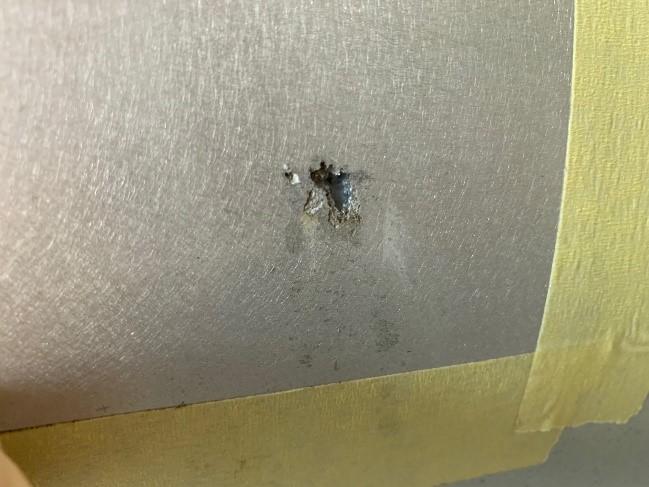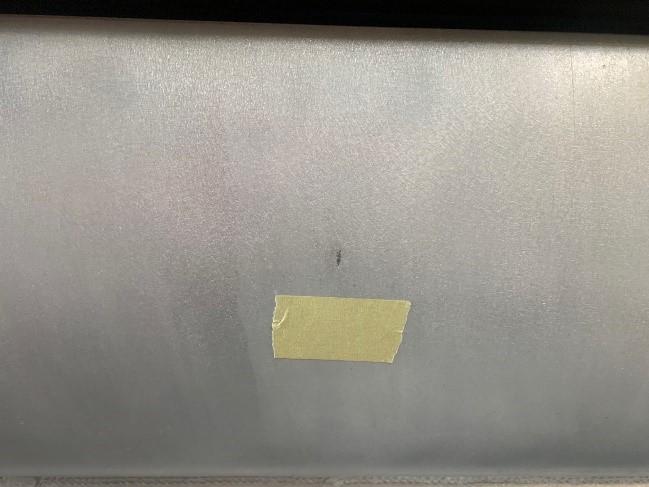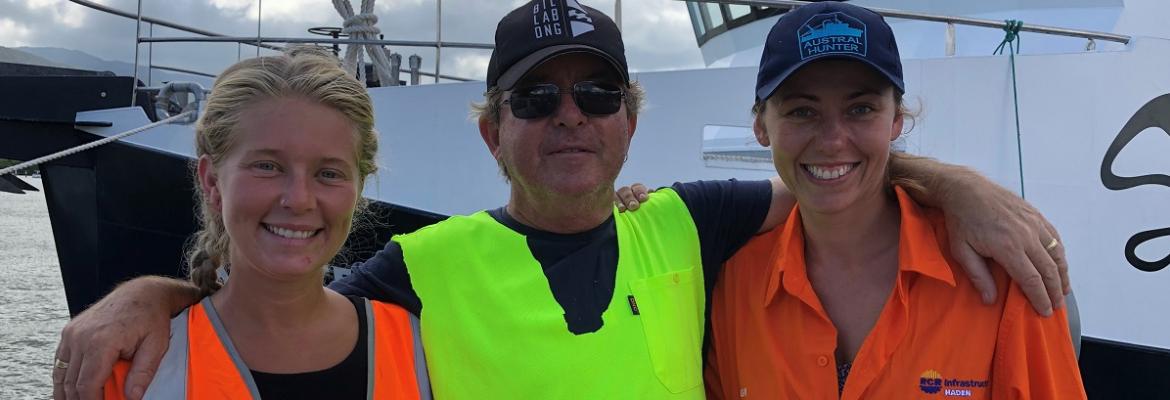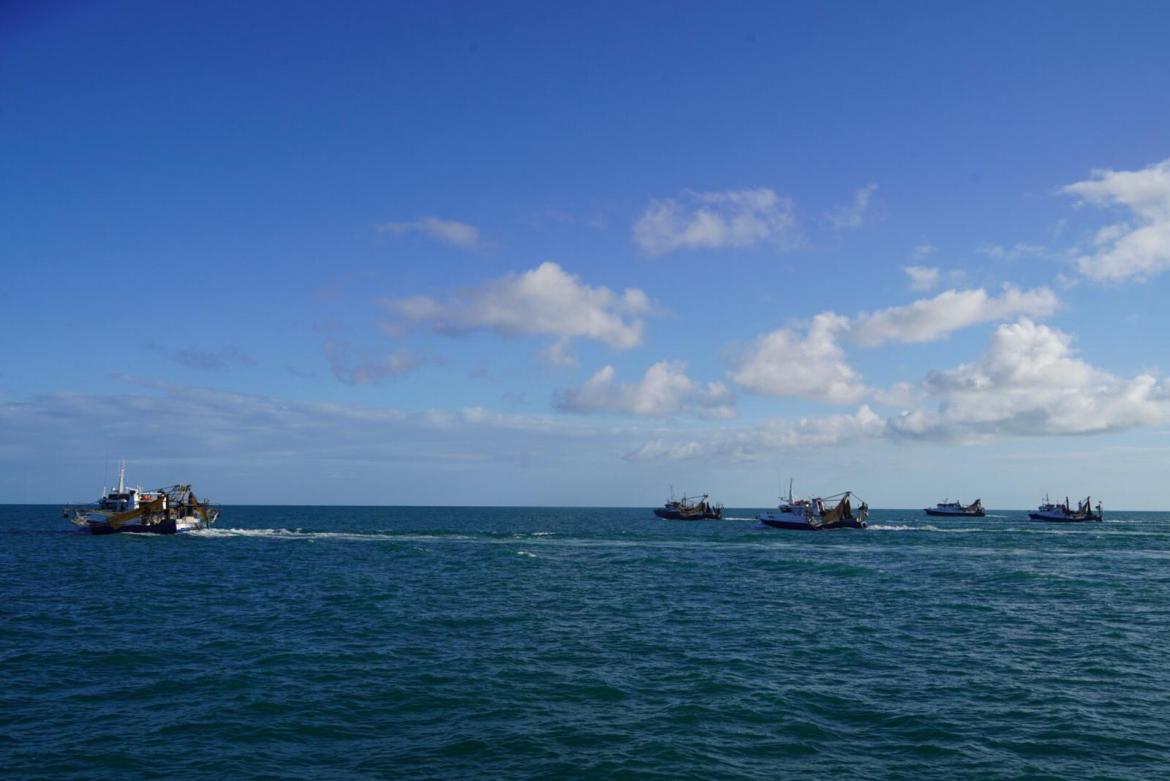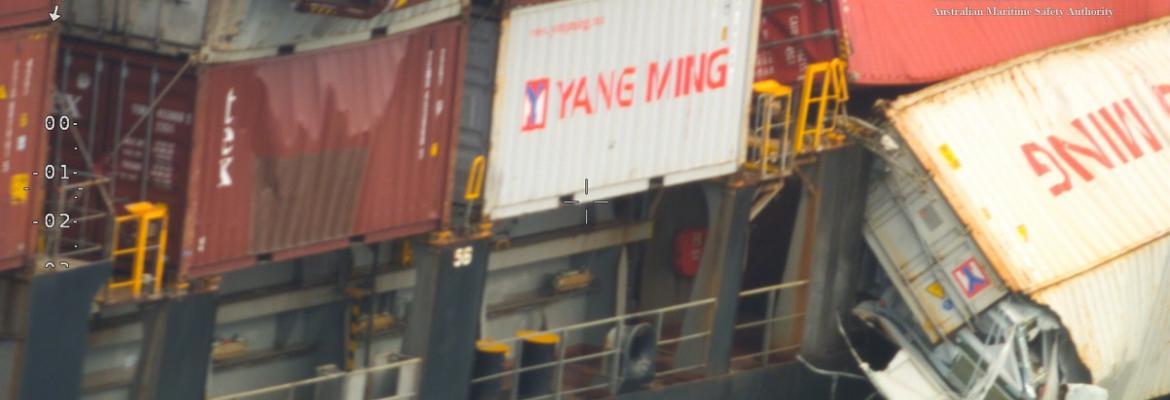Survey Matters January 2023
In this edition
- Commencement of National Standard for Commercial Vessels (NSCV) C2 – Watertight and Weathertight Integrity
- MARS updates - survey reminder letters
- Administration of fees for specific exemption and equivalence applications
- Temporary operations documents
- How AMSA aligned certificates of survey to state issued certificates when Marine Order 503 was updated
- New regulations relating to air pollution from vessels
- Ensuring correct installation of float free EPIRBs
Commencement of NSCV C2 – Watertight and Weathertight Integrity
NSCV C2 came into effect on 1 January 2023 for new vessels. The new standard replaces USL Code Sections 5C, 5D and 7.
NSCV C2 reflects current technology, international standards, and best practice. It also addresses safety risks highlighted by several fatal and serious incidents over the last four decades. These incidents have highlighted the importance of:
- the effectiveness of watertight and weathertight components such as hatches, doors, and through-hull fittings
- rapid drainage of water from decks
- reserve buoyancy
- not overloading.
NSCV C2 commenced on 1 January 2023 and a generic equivalent solution (GES) has been issued which allows voluntary compliance with either USL or C2 until 1 January 2025.
MARS updates - survey reminder letters
AMSA is currently working on a MARS update to provide additional survey reminder letters for vessel owners.
Currently, letters are sent to owners for certificate of survey and EX40 vessels;
- at the time of application
- three months before periodic and renewal surveys are due.
The update will see additional reminder letters generated for survey and EX40 applications that remain open for more than three months. These letters will continue to generate every three months until all surveys are completed, or the applicant opts out of receiving the reminders.
An overdue letter will also now generate for periodic surveys which remain open three months past their due date. Only one reminder letter will be sent for overdue periodic surveys.
The reminder and overdue letters will list surveys that have been submitted including the name of the surveyor who has submitted the work and list the incomplete surveys. Additionally, a survey that has been claimed but not completed will show as incomplete with the surveyor listed.
Example extract from letter
The table below shows the surveys required to be submitted to AMSA for this application and their current status:
| Survey | Code | Status | Surveyor |
|---|---|---|---|
| 1. Periodic Lightship Check | LITE-123456 | Submitted | Ms Example Surveyor |
| 2. Out of Water Survey | OWAT-123456 | Incomplete | Mr Example Surveyor |
| 3. Periodic Survey | PRDC-123456 | Incomplete | Unassigned |
| 4. Shaft Survey | SHAFT-123456 | Submitted | Mr Example Surveyor |
The update is currently undergoing final testing by the system developer. We will let you know when the change takes effect.
The additional reminders will provide applicants with greater visibility of their application status.
Administration of fees for specific exemption and equivalence applications
The fee generated by AMSA when submitting a specific exemption (SPEX) or equivalence (EMOC) application is based on 1½ hours of processing and assessment time.
It is AMSA’s experience that defensible and well documented SPEX and EMOC applications can be processed within this time period. However, complex applications may take longer or cannot be assessed due to a lack of information.
AMSA can provide additional assessment for applicants in these circumstances. However, as a fee for service agency, AMSA is required to charge for assessment of SPEX and EMOC applications on an hourly basis.
Please be aware that moving forwards, in circumstances where the initial 1½ hour assessment time is exhausted, AMSA may send an updated estimate of the total number of assessment hours and the associated fee payable. An applicant can decide if they would like to pay the additional fee to continue their application or close their application.
As specified in Section 51(6) of the Marine Safety (Domestic Commercial Vessel) National Law Regulation 2013, this fee must be paid in advance and AMSA is not required to continue to assess the application until the amount specified in the notice is paid.
If the cost of providing the assessment ends up being less than the estimated fee amount, AMSA will refund an amount equal to the difference between the estimate and the cost of providing the assessment.
Are you issuing temporary operations documents correctly?
Recently we have seen some accredited surveyors complete the temporary operations section of the AMSA 586 form where the relevant criteria for issue was not satisfied.
It’s important to know that it is not the issue of the signed document alone that exempts the vessel and allows for temporary operations (under Division 5 or 6 of EX07). The vessel must also comply with all the conditions and criteria for the issue of the document. Getting this wrong has serious consequences for the vessel owner, and subsequently for the surveyor issuing the signed document. It may result in contravention of National Law requirements for vessel certification and affect conditions of the vessel’s insurance coverage.
Under divisions 5 and 6 of EX07 an accredited surveyor or recognised organisation may issue a temporary operations document only when all the relevant criteria are satisfied. The criteria for issue generally includes all the relevant vessel surveys being carried out, and the person who conducted the surveys considering whether the vessel complies with the applicable standards for each division.
Completion of all the surveys is not the only criteria – for example division 6 requires the surveys to be completed and an application for renewal of the certificate to be submitted within a specified timeframe. For more information see the instruction to surveyors DCV-ITS-002. Please review this instruction before issuing temporary operations documents under division 5 or 6 of Exemption 7. Note – this instruction also includes information about sea trials documents (division 3).
Examples of incorrect and/or erroneous completion of the temporary operations section of the AMSA 586 form
In July 2022, an AMSA 586 form was erroneously completed by a surveyor for a 31.5m class 2B vessel. The form indicated that only the in-water component of the renewal survey had been completed. The surveyor also incorrectly filled in the division 5 temporary operation section (for periodic surveys) with the intention of giving the vessel an extension of time to complete the renewal surveys. Not only had the vessel not completed all the renewal surveys, but division 5 only applies to periodic surveys (not renewal).
Division 7 of EX07 is available for a vessel to be operated after the certificate of survey has expired and only the in-water components of the renewal survey have been completed. The operator must make an application using the AMSA 777 form if they wish to utilise Division 7.
In May 2022 AMSA identified a class 1 vessel that didn’t hold a certificate of survey when it was involved in an incident. Prior to the incident a surveyor completed an AMSA 586 and issued it to the owner with the division 6 temporary operation section completed.
Despite the surveyor completing the AMSA 586, the criteria for temporary operations under division 6 was not met because a renewal application had not been submitted for the certificate of survey.
For clarity, division 6 also requires the renewal survey to be completed. SAGM Part 2 defines a renewal survey as:
... surveys undertaken at the end of a survey cycle, while the vessel is out of the water, and while afloat, to determine if the safety systems and safety characteristics of a vessel at that point in time comply with the applicable legislation, exemptions and standards.
Clause 4.11 of SAGM Part 2 sets out the scope and depth of a renewal survey. It requires that the survey must include the examinations, verifications, tests, and trials of the items specified in Table 9 relevant to the survey type. Table 9 also requires shaft and lightship inspections to be completed as a part of a renewal survey.
How AMSA aligned certificates of survey to state issued certificates when Marine Order 503 was updated
All National Law certificates are subject to statutory conditions prescribed by Marine Orders. The statutory conditions mentioned in Marine Order 503 (Certificates of survey – national law) were updated in 2018.
The effect of those changes was that all domestic commercial vessels with a valid certificate of survey were moved into one of three new survey frequency categories - high, medium, or low (which replaced the previous NSAMS survey levels).
The new statutory conditions relating to survey regimes came into force on 1 July 2018 and apply to the vessel from that date.
The new survey regimes were assigned to vessels and aligned to the survey due dates on each vessel’s previous state issued certificates.
AMSA re-issued certificates with the updated survey levels and due dates (including updated expiry dates) to assist certificate holders in understanding how the new regimes applied to their vessel and make it easier for them to meet the new statutory conditions in Marine Order 503.
How did AMSA align certificates to the previously recorded survey dates on state issued certificates?
Chapter 4.11 (and table 9) of SAGM Part 2 requires shaft and / or out of water surveys to be undertaken as part of the renewal surveys.
Using the state data that was available to AMSA at the time, the new survey regimes and expiry dates were based on a combination of the vessels previous survey due dates and expiry dates.
Those changes along with a copy of the re-issued certificate that showed the updated survey regime, survey and expiry dates were communicated via letter to each certificate holder in July 2018. Reminder letters are posted to advise of both periodic and renewal survey due dates. Certificate holders were also advised to check the updated certificate and contact the Data Verification team (Dataverification@amsa.gov.au) if the updated certificate did not appear to align with the state issued certificate.
New regulations relating to air pollution from vessels
Marine Order 97 (MO97) deals with the prevention of air pollution from vessels and gives effect to the MARPOL Regulations for the Prevention of Air Pollution from ships (Annex VI). MO97 applies to regulated Australian vessels, domestic commercial vessels, recreational vessels, and foreign vessels.
MO97 has been re-issued and came into effect on 1 January 2023. It implements a new short-term measure adopted by the International Maritime Organization (IMO) to reduce the carbon intensity of international shipping by 40% by 2030. The short-term measure applies to certain types of foreign-flagged and commercial Australian vessels that undertake international voyages.
MO97 also requires that all marine diesel engines with a power output of more than 130 kW installed on a domestic commercial vessel from 1 January 2023—or that undergo a major conversion from that date—must have on board an EIAPP certificate and associated technical file.
Any existing diesel engines installed before 1 January 2023 will not require an EIAPP certificate or associated technical file unless the engine undergoes a major conversion or the vessel undertakes an overseas voyage (for example, to undertake maintenance or for delivery).
Learn more about the new air pollution regulations from 1 January 2023.
Ensuring correct installation of float free EPIRBs
AMSA is urging owners of vessels with float-free EPIRBs onboard to make sure these devices are correctly installed.
In 2021, there were nearly 50 inadvertent activations of float-free EPIRBs which were the result of incorrect installation.
EPIRBs removed from their float-free housing by vessel owners and replaced incorrectly accounted for numerous inadvertent activations. Incorrect re-installation often resulted in a misalignment between the magnet inside the housing and the reed switch on the EPIRB itself.
If the magnet and reed switch aren’t aligned exactly as per the manufacturer’s guideline, the EPIRB water sensor can activate when exposed to moisture while still inside the housing – like during a squall or hosing of the vessel.
With proper installation, float-free EPIRBs are designed to activate only when two things occur:
- the whole device is submerged, and the pressure underwater causes the hydrostatic release unit (HRU) inside the housing to release the EPIRB
- when water activates the sensor on that EPIRB.
At that point, the EPIRB should float free of the vessel and be actively signalling for help.
Correct installation of float-free EPIRBs will ensure they function as intended, and that search and rescue resources are not occupied by inadvertent activations.
Keeping beacon registration details up to date also helps search and rescue officers contact beacon owners when their beacons are detected – including for inadvertent activations.
Please ensure your clients are aware of the manufacturer’s guidelines and AMSA’s beacon registration requirements.
